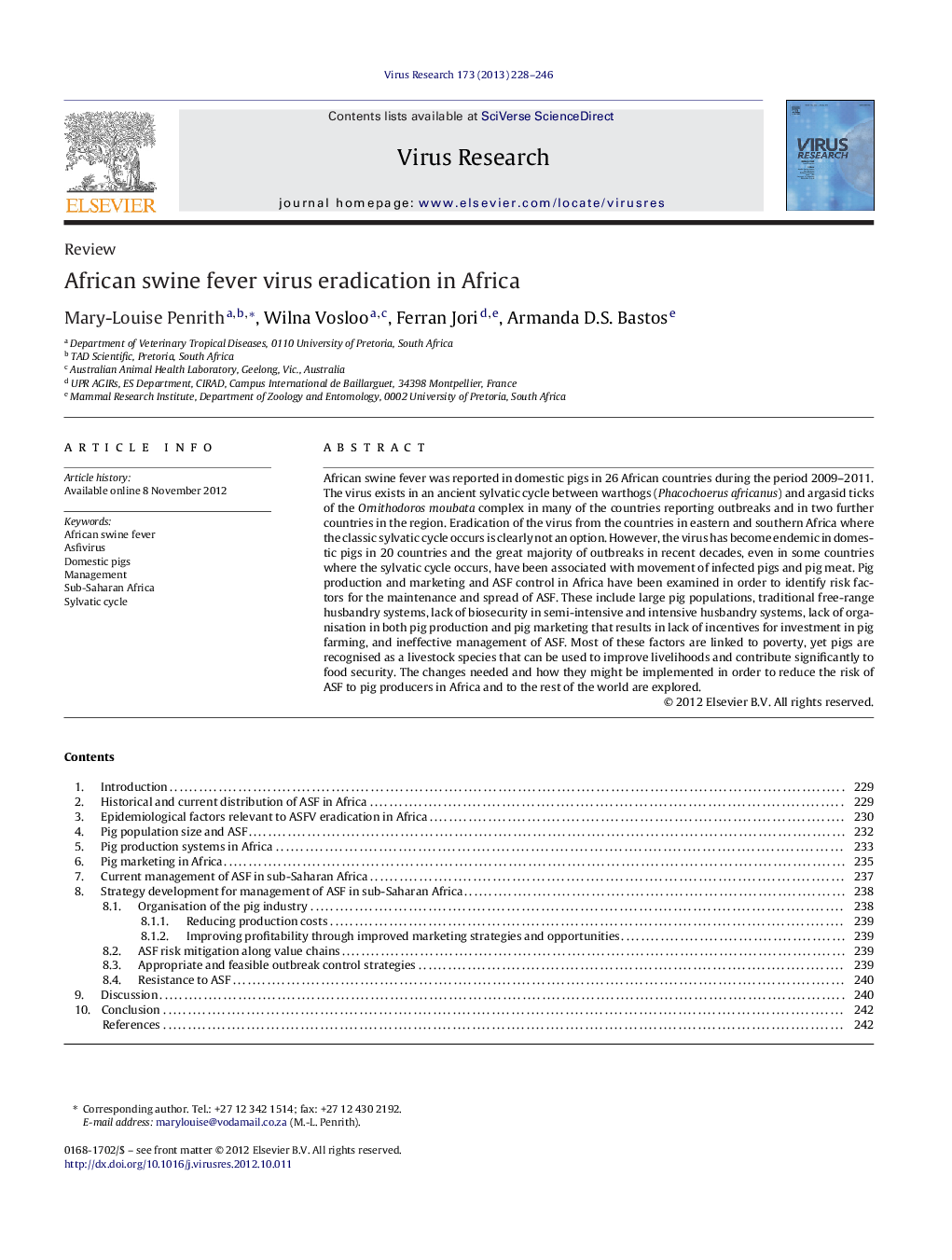| کد مقاله | کد نشریه | سال انتشار | مقاله انگلیسی | نسخه تمام متن |
|---|---|---|---|---|
| 3428808 | 1228227 | 2013 | 19 صفحه PDF | دانلود رایگان |

African swine fever was reported in domestic pigs in 26 African countries during the period 2009–2011. The virus exists in an ancient sylvatic cycle between warthogs (Phacochoerus africanus) and argasid ticks of the Ornithodoros moubata complex in many of the countries reporting outbreaks and in two further countries in the region. Eradication of the virus from the countries in eastern and southern Africa where the classic sylvatic cycle occurs is clearly not an option. However, the virus has become endemic in domestic pigs in 20 countries and the great majority of outbreaks in recent decades, even in some countries where the sylvatic cycle occurs, have been associated with movement of infected pigs and pig meat. Pig production and marketing and ASF control in Africa have been examined in order to identify risk factors for the maintenance and spread of ASF. These include large pig populations, traditional free-range husbandry systems, lack of biosecurity in semi-intensive and intensive husbandry systems, lack of organisation in both pig production and pig marketing that results in lack of incentives for investment in pig farming, and ineffective management of ASF. Most of these factors are linked to poverty, yet pigs are recognised as a livestock species that can be used to improve livelihoods and contribute significantly to food security. The changes needed and how they might be implemented in order to reduce the risk of ASF to pig producers in Africa and to the rest of the world are explored.
► ASFV is maintained in an ancient sylvatic cycle involving warthogs and argasid ticks in East and Southern Africa and therefore cannot be eradicated from the region.
► ASFV is endemic in domestic pigs in 20 African countries and may be eradicable from domestic pigs.
► The ways in which pigs are produced and marketed are important in the maintenance and spread of ASFV.
► Control and eradication of ASFV in domestic pigs will depend upon changing the way in which pigs are managed.
Journal: Virus Research - Volume 173, Issue 1, April 2013, Pages 228–246